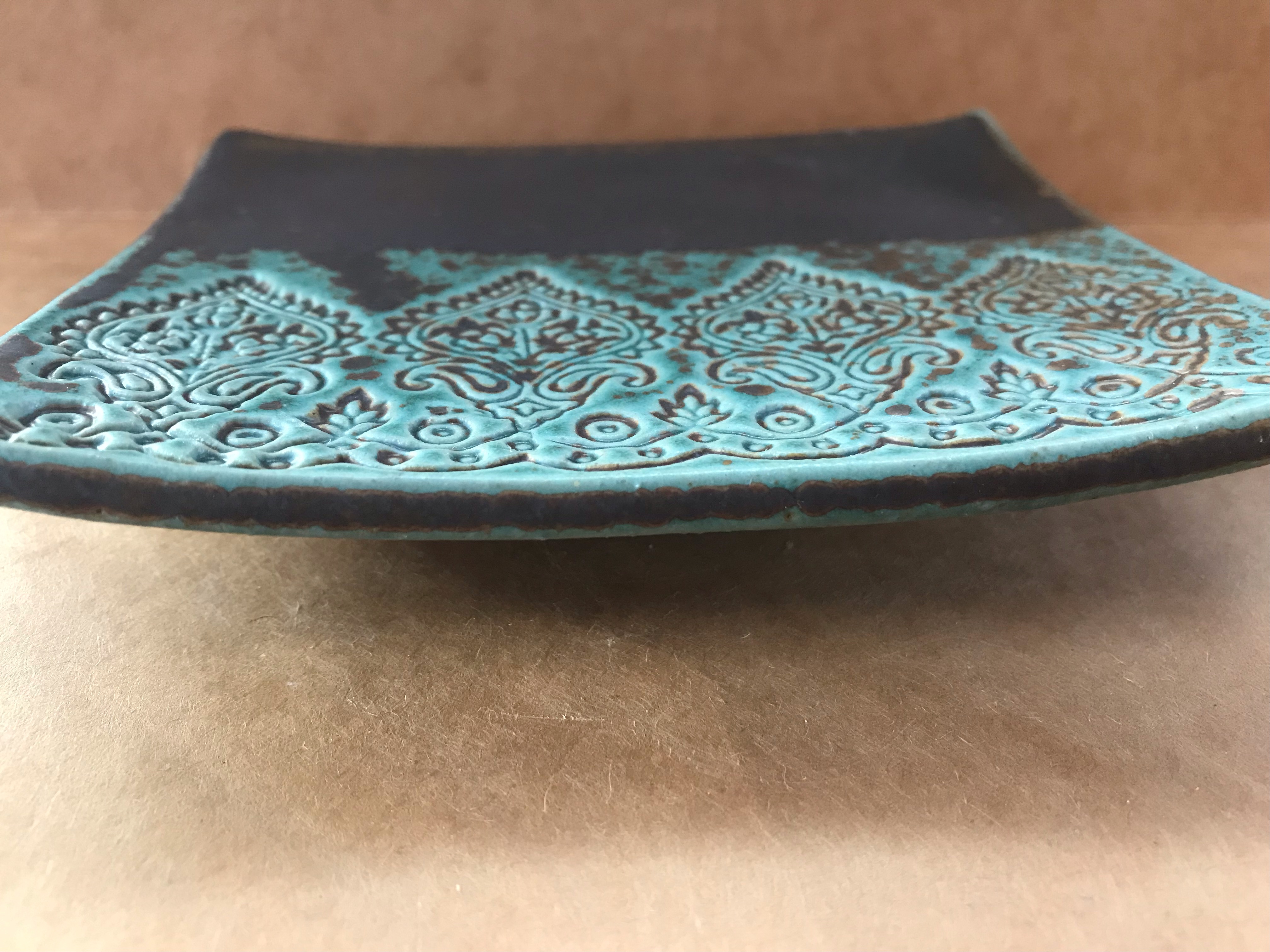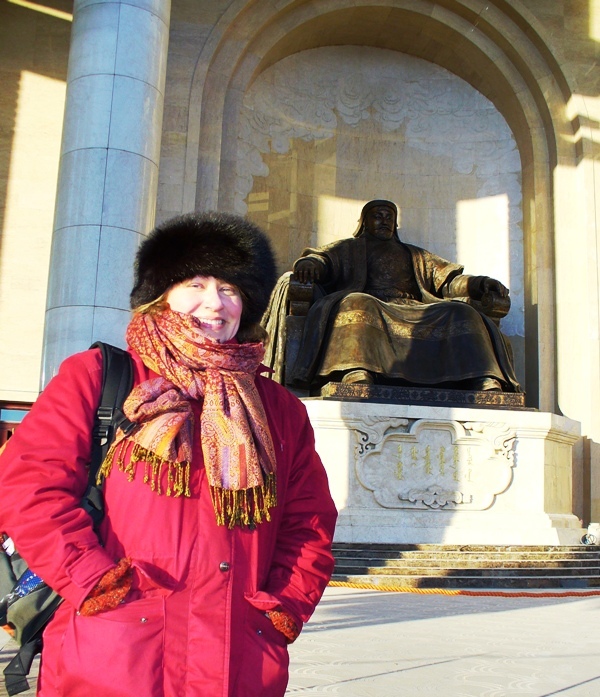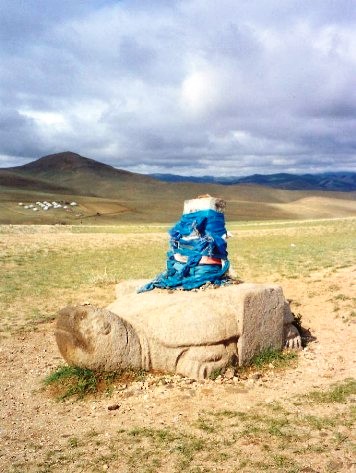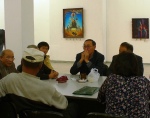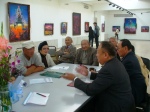May 25, 2023
About Rituals
Posted by Julie Pitzen under Mongolia, travel, Uncategorized | Tags: morning, ritual |Leave a Comment
December 13, 2021
AncientFragments
Posted by Julie Pitzen under art, artist, ceramics, pottery, Shop | Tags: ceramics, Etsy, tea |Leave a Comment
Getting my Etsy shop back up and running!
Click link, Like, Share – Thank you for visiting!
https://www.etsy.com/shop/ancientfragments?ref=shop_sugg
August 26, 2021
Life in Another Culture: Overcoming Fears and Obstacles
Posted by Julie Pitzen under UncategorizedLeave a Comment
I recently published a short article on Medium.com. Please have a look.
“How Overcoming Fears and Obstacles and A Trip Abroad Changed Me Forever”
August 21, 2021
A Class in the Art of Food and Spices
Posted by Julie Pitzen under ceramics, Chicago, Food, pottery, Uncategorized | Tags: ceramics, cookingwithspices, food culture, spices |1 Comment
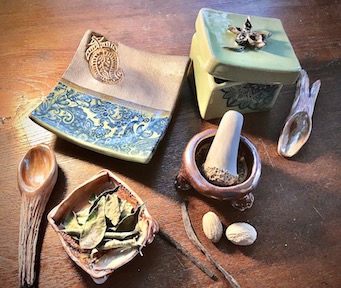
This Summer, I had the time to take a class at Lill Street Art Center. For the past several summers, Cathi Schwalbe has taught a ceramics class, “The Art of Food”, at Lill Street art center here in Chicago. I had heard great things about this class and this was the first summer I had the time to take it. Every summer, Cathi chooses a different food related topic to focus on. This summer was Spices! My only wish is that it was longer than 5 weeks. I hope she will teach it again during the year or next summer. There’s so much to explore in the culture of food and ceramics, food and culture go hand in hand. We had a little time to explore Chai, mortars and pestles, star anise, and herbed bread just to name a few things. I may explore this topic in a future post and the coffee and spice plantations in Bali, Indonesia that I’ve had the pleasure of visiting.
Above are a few items I made related to spices. All were made from different stoneware clays. From the top left hand corner: A small square plate with rice paper decal; small lidded box with star of anise decoration for storing spices or garlic; small spoon (actually there are 2 here); small handheld mortar and pestle for grinding small things like a clove of garlic or walnuts for your cereal; small square dish for holding spices or teabag.
We also visited a spice shop here in Chicago: Savory Spice Shop. I also like The Spice House in Evanston, IL.
For more about the history of spices, check out: “Spice: The History of a Temptation”, by Jack Turner.
#spices #ceramics #clay #foodandculture
September 12, 2016
Deer stones in Muron, northern Mongolia.
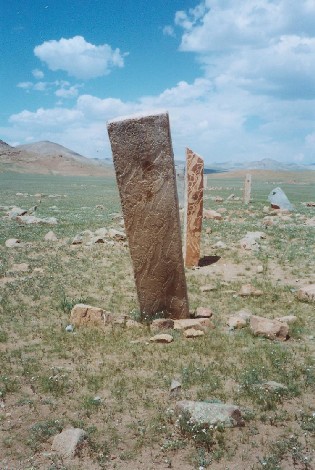


Remnants of 7th century settlement at Kharbalgas, central Mongolia.
 Kurgans in “valley of the kings”. North central Mongolia.
Kurgans in “valley of the kings”. North central Mongolia.
Turtle stone at Kharkorum, Arkhangai province.
February 8, 2010
Artist – Bavuu Erdenebayar: A Miro of Mongolia?
Posted by Julie Pitzen under art, artist, Asia, Central Asia, Contemporary Art, Mongolia, museum, painting, travel, Uncategorized | Tags: culture, Red Ger, Ulaanbaatar, Zanabaazar |Leave a Comment
During the H1N1 Flu outbreak in Mongolia, all public gathering places were closed for several weeks to prevent further spread of the flu. In December, they began to slowly re-open museums, theaters, etc. In a fit of boredom, I walked around the city and discovered the Red Ger Gallery was open! The gallery is located on the first floor of the Zanabaazar Museum. I wandered in and discovered they were having an unannounced opening for the solo exhibition of the painter, Bavuu Erdenebayar.
What an interesting exhibition and conversation I had with him. His paintings were based on anecdotes from Mongolian culture and folklore; “folk wisdom”. His shapes are very fluid and organic and I immediately recognized the resemblance between his work and that of Miro. There is also a cartoon or Anime like quality to his work. And when he showed me a small children’s activity book he published, it didn’t surprise me in the least. I’ve noticed when attending exhibitions in Mongolia, artists often don’t include an artist statement. But Bavuu did, and even though we had a great conversation about art and his art, I appreciated his thoughtful statement.
Here it is:
“All life is connected to each other – humans, animals, nature. A new era is coming and everyone must be ready to accept this new era. In this era, you can realize your mistakes and change yourself to be a better person. Due to aggression, struggle, conflict of the past era, our nature and the world have suffered day after day. The Mongols understand bad things. Bad human character brings unhappiness and causes bad things. So we can live in peace and happiness if we respect our own traditions and follow customs and habits inherited from our ancestors. The next generation should accept and follow these carefully. Whether or not you want to follow them, there are certain rules you must follow. There is a natural law and everyone must follow the natural law. There are some laws created by humans but they can be changed or violated. So the law of life is included in folk proverbs, wise words and books. Ex. – ‘It’s better to see once than to hear it one thousand times.’ Humans always forget what they hear, but not what they’ve seen. So you should see this exhibition with your own eyes.”
October 11, 2009
Roerich Museum Opens in Mongolia
Posted by Julie Pitzen under art, artist, Asia, buddhism, Central Asia, Chicago, Contemporary Art, Mongolia, museum, painting, Russia, travel, Uncategorized | Tags: Mongolia, museum, painting, Roerich, Russia, Ulaanbaatar |Leave a Comment
- King of Shambala
- Portrait of Nicholas Roerich by his son
- Nicholas Roerich in Mongolia
It’s been many years since I first came across the work of Nicholas Roerich. I can’t remember how I became acquainted with him… Perhaps while doing some research related to Tibet or Central Asia. But I remember, several years ago, visiting the townhouse on the upper west side of Manhattan that houses a museum dedicated to him. A fascinating Russian painter and philosopher who lived a great deal of his life in India and Asia. He wrote the “Pax Cultura”, an international treaty dedicated to the protection of cultural values and peace through higher culture. He was also nominated several times for the Nobel Peace Prize. However, about the time of the Russian Revolution and prior to living in Asia, he spent some time in the U.S., including a short time in my home town of Chicago – at the invitation of Chicago’s Art Institute. He would have celebrated his 135th birthday this past week on October 9th, same day as my grandfather’s. And so it was a bit synchronistic for me to find out this summer that he had also lived in Ulaanbaatar for a year.
A famous Mongolian historian, Professor Bira, had discovered the decaying, Russian-style wooden house that Roerich and his family lived in from 1926-27. Professor Bira and a group of supporters saved the house from demolition, restored it and dedicated it as a museum and art gallery this past July. An art competition and exhibition for young Mongolian artists was also held there recently. Rumor is that the founders and supporters hope to develop an art center in Roerich’s memory on the site. For more information about the Roerich museum in Ulaanbaatar, Mongolia, visit: http://www.roerichmongolia.org/.
October 10, 2009
Khoomei-Taiko Ensemble Performance
Posted by Julie Pitzen under art, Mongolia, travel | Tags: drums, khumei, music, taiko, USA |Leave a Comment
The first weekend of October in Ulaanbaatar, we experienced a unique cross-cultural performance – a synthesis of Japanese and Mongolian musical traditions. The Khoomei-Taiko ensemble, which grew out of a similar concert in New York City in 2007, blew us away with their deep resonating drums and haunting traditional throat singing. The ensemble is comprised of Japanese flutist – Kaoru Watanabe, koto player – Miki Maruta, taiko drummers – Tetsuro Naito and Shoji Kameda, Khongorzul Ganbaatar – Mongolia’s State honored long song singer, Mongolia’s masterful musician and performer – Tserendorj Tseyen, and Shinetsog Dorjinyam – Mongolia’s acclaimed horse-head fiddle musician and khoomei (throat) singer. The group hopes to engage audiences in the U.S. with this unique cross-cultural synthesis of ancient music traditions. For more information about the group and their upcoming tour, visit: www.khoomtai.blogspot.com.
October 10, 2009
Chingiss, Surrealism and The 21st Century
Posted by Julie Pitzen under art, artist, Asia, Mongolia, travel | Tags: art, lkhamsuren, Mongolia, painting, socialism, surrealism, Ulaanbaatar |Leave a Comment
- Lkhamsuren with Chingiss painting behind him
- Distinguished artists and writers
- Lkhamsuren
I have always been intrigued by the Symbolists and Surrealists and wished I could paint dreamy and imaginative images like them. In my mind, I’ve associated them with modern European artists from a bygone era. It’s rare that I’ve come across a contemporary surrealist painter who truly inspires me. Chicago artist, Eleanor Spiess-Ferris is one of them, and the Mongolian painter, Lkhamsuren is another. There are some paintings and artists that just speak to you and Lkhamsuren’s images resonate with me.
I first came across Lkhamsuren’s work when I saw a calendar of his paintings in an Ulaanbaatar souvenir shop. A year later, I had the honor of meeting him in his studio. Last month, he had an exhibition, “21st Century Art” at the Union of Mongolian Artists’ (UMA) main exhibition hall. I saw his exhibition and sat in on a discussion he lead about his work with a group of Mongolia’s honored artists, poets, and critics.
Before his lecture and group discussion, Lkhamsuren walked me through his exhibition, giving me the history and background information of many of his paintings, and an explanation of much of the symbolism he uses. Lkhamsuren has been an artist since 1965 and began painting in the surrealist style in 1974-5. He worships the sky, as did Chingiss Khan, and as do Mongolia’s nomadic people and Shaman do even today. He creates only a few paintings per year and spends a great deal of time researching, planning and thoughtfully drawing out each painting. By my observation, this is truly evident in each detail. There is great spiritual and historical depth to his paintings.
As we are walking through the gallery, he tells me that “science says everything comes in parallels; opposites; binary opposition. For every action there is a reaction.” He says he studied about the power of the triangle. “The triangle is a powerful symbol with a long history coming from Ancient Rome, Egypt, Mexico, etc. It’s found throughout ancient history and cultures and is a powerful symbol – Think of pyramids and other ancient architecture and symbols in the shape of a triangle.”
“The triangle is also powerful in nature”, he says. “Now we must protect nature. There have been so many natural disasters because nature is responding to global warming and problems caused by humans.” This is also evident in his art. “Artists are using art to respond to global warming and damage done to the environment”. This is evident in his use of the Mongolian landscape which in some cases has become barren due to de-forestation, mining, harsh weather and over-grazing.
He mentions the yin-yang symbol – sometimes called a fish symbol by Mongols. “But Mongolia is a landlocked country and this is not a natural symbol for Mongols”, he tells me. “It came from China.” He created his own symbol of binary opposition: 2 triangles – inverted and placed over each other. It looks to me like the Star of David. He also uses the XAC symbol also known as a sun symbol in ancient Indian culture and later known as the svastika. He says the Nazis used the svastika because half of them were originally from India.
He likes to use historical symbols and elements such as Chingiss Khan in his paintings. These subjects can often be political. This was especially problematic during the Socialist period as Chingiss Khan and the early history of the Mongols were banned at that time. The frames of Lkhamsuren’s paintings are also full of symbolism – using small metal charms, bone and horsehair which hang around the edges of his paintings. These are often replicas of symbols found in shamanism or on petroglyphs and ancient stone monuments. These unique frames give his paintings an Iconic quality – reminiscent of the Icon paintings found in Russian Orthodox churches.
We pause in front of one unique painting of a famous Buryat Mongol Lama. In the painting, he is seated in a meditative position which creates the outline of a triangle. Lkhamsuren tells me he interviewed this Lama’s previous caretaker while researching his idea for this painting. He says, “The triangle was a powerful symbol in this Lama’s life. He studied the power of the triangle and shared this power with people. He even preserved his own body after death.”
As mentioned previously, Chingiss Khan is a popular subject in his paintings. “Chingiss is a misunderstood figure in history”, he tells me. Lkhamsuren elevates Chingiss in his paintings and creates icon-like images of him and says Chingiss should be worshipped.
I tell him that it is interesting to me that he chose the surrealist genre because it seems to go against socialist ideology and as he mentioned, “it is more free”. This is especially intriguing since under Socialism, art was often used as propaganda and controlled by the State. I ask him if anyone criticized his work? Yes, he said. In fact, he and other modern artists were punished at that time, although he would not say how. But now, in the 21st century, he honors the memory and dreams of Chingiss, his ancestors and Mongolia’s ancient history freely.
